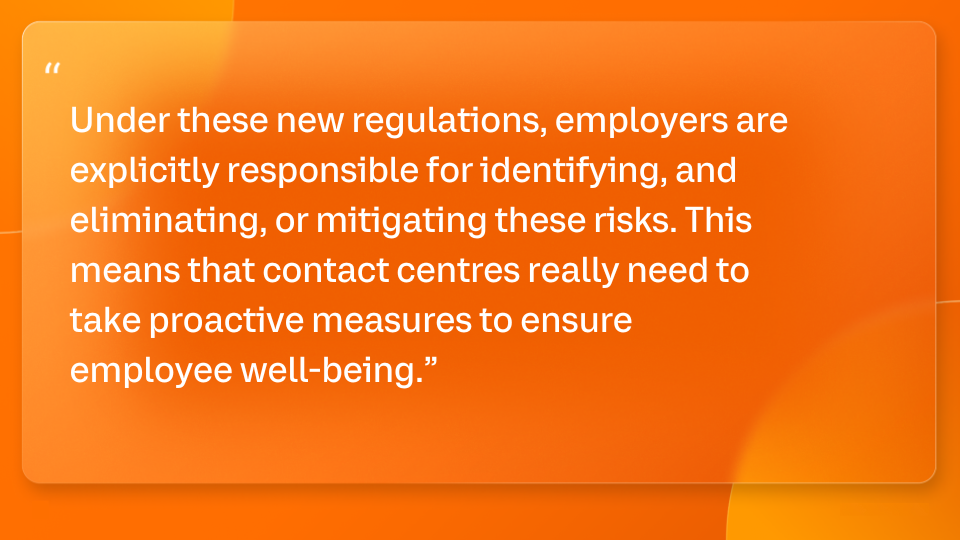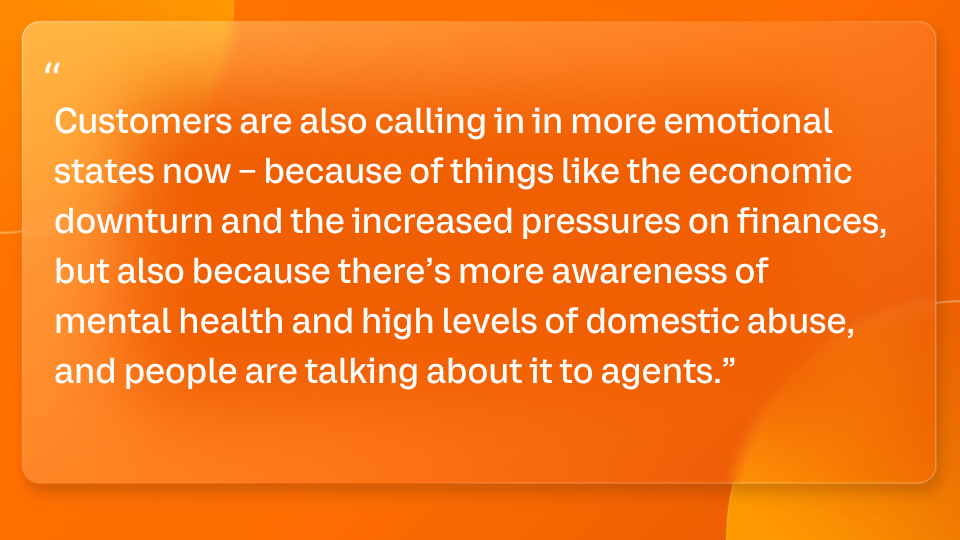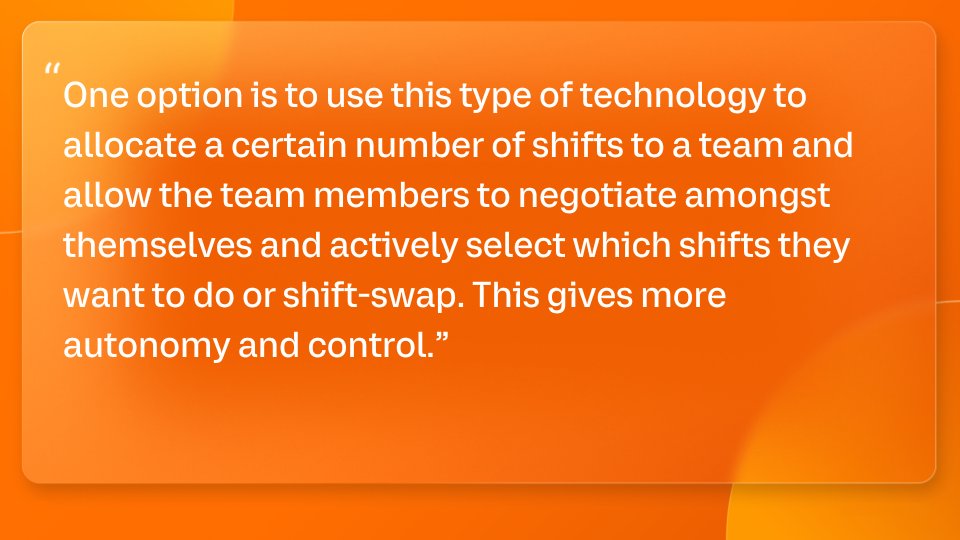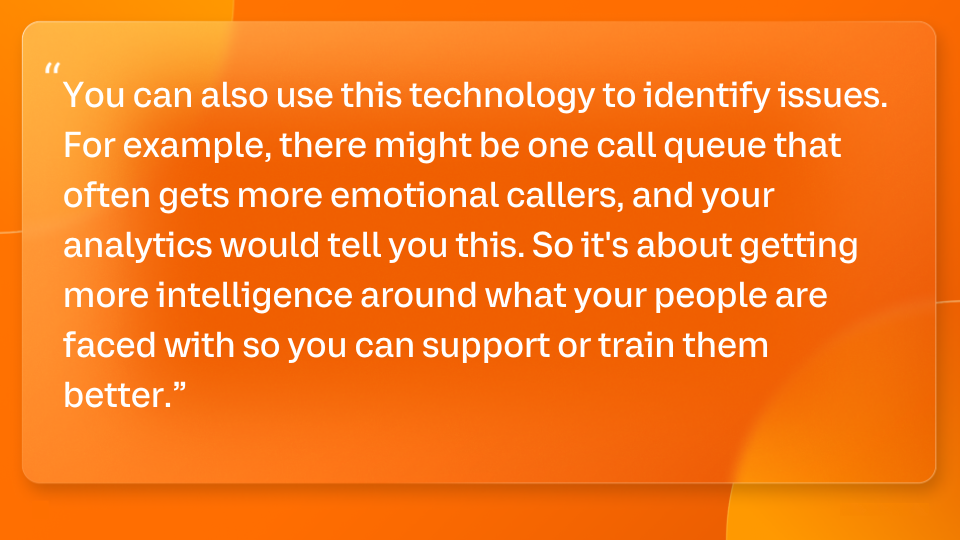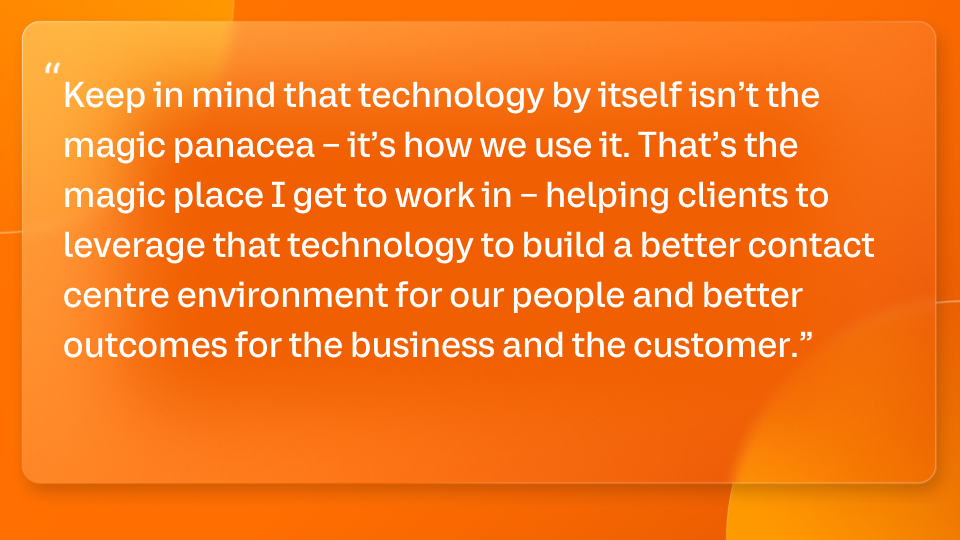‘Ask the Expert’ is a series of interviews RingCentral runs with influential thought leaders from around the world, including UC and CX consultants and analysts. In this series, we aim to find out what’s at the cutting edge of UCaaS and CCaaS.
For this month’s instalment, RingCentral’s Ian Nevin, Director of International Consultant Relations, spoke with Lyn Trewenack, Director of BBB Advisory, who was recently recognised as one of Australia’s Top 100 Most Influential People in the contact centre industry.
They discussed how businesses could reduce the psychosocial hazards that impact the mental health and social well-being of employees working in contact centres.
Can you tell us a bit about your background and experience in the contact centre industry?
Absolutely. Well, I’ve had a 30-year career in the industry, as both a practitioner and consultant, establishing and managing large and complex customer-facing operations for industries such as financial services, insurance, and outsourcing.
I’d say that the highlights are when my project, clients or centres are recognised for excellence – whether that be project management, contact centre or customer service awards. It’s typically for establishing new contact centres, developing customer experience strategies, designing contact centre operating models for unique situations, or steering customer-focused business transformations within existing operations.
I’ve been MD at BBB Advisory for almost ten years now and have been lucky enough to work with some of the world’s leading brands. I’m also asked to regularly participate in customer experience discussions and debates – including interviews like this!
That’s great, thanks. So, what are the key changes to Australia’s Workplace Health and Safety (WHS) regulations?
The WHS regulations now demand more detailed considerations of psychosocial hazards, with red flags to those business units with high turnover and absenteeism – such as contact centres.
In fact, there was a case that Comcare made public recently, which appears to be a contact centre, where they found that despite steps underway to increase staff numbers and change processes and technology to better manage the workload, the organisation was contravening work health and safety laws by failing to adequately address immediate psychosocial risks across the workplace. So businesses really do have to get a handle quickly on these hazards.
So, what are the main psychosocial hazards in contact centres?
Okay, for contact centre employees in general, there are ten key hazards that have been identified. These are as follows:
- High workload: The pressure of excessive workloads, characterised by high call volumes and demanding targets, can lead to stress, burnout, and fatigue among employees.
- Emotional demands: Daily interactions with upset or irate customers can take an emotional toll on employees, increasing the risk of emotional exhaustion and psychological distress.
- Time pressure: Strict call handling times and limited breaks can create a constant sense of time pressure, leading to heightened stress levels and reduced job satisfaction.
- Monotonous tasks: Repetitive tasks, such as reading from scripts or handling similar customer enquiries, can lead to monotony and reduced job satisfaction over time.
- Lack of control: Limited autonomy and decision-making power over work-related matters can contribute to a sense of disempowerment and job dissatisfaction.
- Unclear role expectations: Ambiguity regarding job roles, responsibilities, and performance expectations can cause stress and frustration among contact centre employees.
- Lack of support: Insufficient support from supervisors or colleagues – including inadequate feedback, training, and guidance – can hinder performance and increase stress levels.
- Shift work and irregular hours: Irregular working hours, including night shifts and rotating schedules, can disrupt sleep patterns and negatively affect employees’ overall well-being.
- Work-life imbalance: Demanding work schedules, long hours, and limited flexibility can make it challenging for contact centre employees to maintain a healthy work-life balance, leading to increased stress and strain.
- Lack of recognition: Insufficient recognition and rewards for job performance can reduce motivation, job satisfaction, and overall engagement among contact centre employees.
And what’s causing these issues to arise?
Several things cause the challenges; firstly, how the business is managed. So, if you’ve got a business model where performance is measured solely by KPIs like occupancy rates and call handling time, that will create a culture that is not conducive to good employee mental health. Now, most Australian contact centres have moved away from that level of high pressure, but there are still some – particularly in the outsourced centres – that are focused that way. And there is still a lot of attention on ‘wrap time’ and talk time, which drives pressure.
And, of course, the ability of our agents and leaders to emotionally manage their own stress and respond to customer stress varies.
What steps can contact centre managers take to address these hazards? How does technology play a role?
It’s a great question because leaders have an obligation to try to eliminate the hazards, but if they can’t eliminate them, it’s their responsibility to at least minimise them, right? Well, a good first step would be to self-evaluate your contact centre’s psychosocial risk level. My consultancy has just put out a self-evaluation tool that lets contact centre leaders do this.
Once you have done that, you can then delve into the specific risks and their underlying causes within your organisation and then come up with a plan for elimination of mitigation of the risks. This will usually involve adjusting operating practices and enhancing leadership and agent skills.
However, contact centre technology has an important role to play here in the following ways.
Workforce management (WFM), call management and effective omnichannel to manage high workloads and call volumes
Workforce management software can alleviate problems of high call volumes by helping you forecast demand accurately and ensure that you have the right mix of people with the right skills working at the right times.
But you can also use its insights to identify when things aren’t working well, for example, when people are taking more breaks, absenteeism patterns, and when employees are working too many irregular shifts (including night or rotating schedules).
All of these things may indicate an employee is struggling.
Also, within WFM systems, contact centres need to build in some flexibility, for example, to provide options for agents to recover from a stressful situation.
Finally, call management tools combined with well-executed omnichannel can help relieve high call volumes and workloads. For example, providing agents with a mix of on-phone and off-phone activities, or placement of messages on the IVR to direct customers to online answers or to use asynchronous messaging in peak times. That being said, leaders should implement omnichannel carefully and ensure this doesn’t impact the quality of customer support.
AI and self-service to relieve time pressure, workloads and monotonous tasks
Many of the AI and automation technologies and other features contact centre providers offer now can help reduce the sense of time pressure and the boredom associated with mundane tasks. However, you do need to involve your agents in the change process, explain why these technologies will help, and allow them to practise with it. This is crucial.
Assuming you’ve done that, though, there are lots of opportunities, for example:
- You can use AI to generate a transcript of conversations automatically, so you reduce agent ‘wrap’ time and call handling time.
- Chatbots and self-service can effectively deal with some of the more routine tasks and queries, freeing agents for more complex enquiries.
- A knowledge management system with integrated CRM and AI features can help your employees see a customer’s relevant history quickly and then guide them towards information that will support them instead of working through many different applications or documents.
Speech analytics, call monitoring and video meetings to handle emotional demands and lack of support
Speech analytics, particularly sentiment analysis, can spot which customers are emotional and provide insight – even in real time – triggering an alert to a Team Leader to check in on the agent after a call.
Training and coaching are key because you need to help agents with the actual words to say and let them practise these difficult conversations. It’s so important that coaching and training are not routinely sacrificed in the name of achieving service levels.
Inadequate feedback and guidance can hinder performance and increase stress levels. So Call monitoring is also useful as supervisors can monitor calls – in real time or later. If supervisors can’t meet their team members face-to-face to provide feedback, a video call feels much more supportive and offers more of that human touch than a chat message.
Training and coaching tools to provide support, improve morale, boost recognition and clarify role expectations
Something I alluded to already (when I spoke about video meetings) is just how crucial training and support are to agent well-being. If an agent has access to training resources and other types of support, then this can improve job satisfaction and how confident they feel in their role.
Here are some examples of how contact centre technology can help in this area:
- Gamification: Gamifying performance, training, collaboration and even customer interactions is a great way to improve morale and make agents feel recognised when it’s done right. For example, some platforms include badges, rewards, and challenges into a training program. Some contact centre software also uses gamification features in day-to-day operations and can be a great way for teams to work together to achieve an outcome.
- Real-time automated coaching: Natural language processing (NLP) analyses what customers say and suggests the best actions to agents.
- Remote coaching: Some software allows leaders to listen to calls and ‘whisper’ to agents without the customer hearing to provide advice during a call.
Technology that supports hybrid working for a better work-life balance
Contact centre solutions today enable hybrid working, which we know often allows employees to feel they have a better work-life balance. It also gives them some sense of control and autonomy about where they work. But there’s a real potential to feel isolated, so it’s important employers are mindful of this and make every effort to ensure people feel connected and valued. Again, video meetings, training and support here can help. But making good use of other internal collaboration tools like messaging can also make a world of difference.
Lyn ended our chat by saying to…
Many thanks to Lyn Trewenack, Director of BBB Advisory, for her insights into how technology can support the psychosocial demands in the modern contact centre. You can find out more about the RingCentral Consultant Relations Program and portal on our hub.
Originally published Nov 02, 2023

